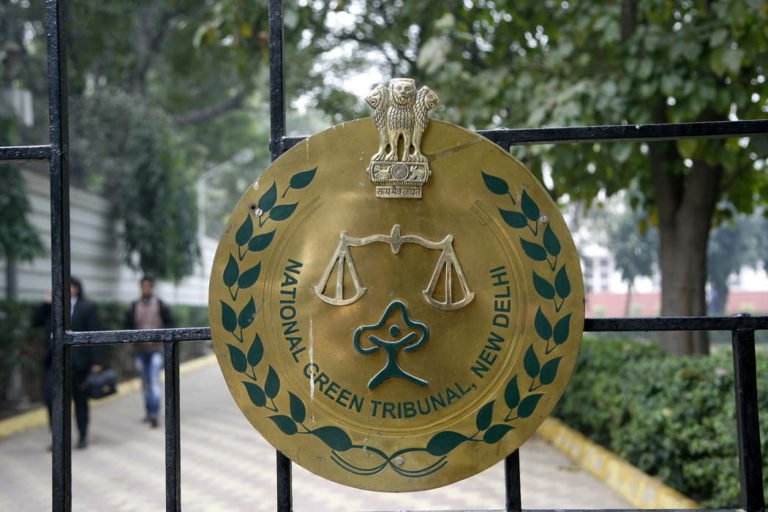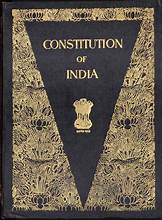Neha Jain, a 2nd-Year law student from Lala Lajpatrai College of Law, Mumbai University has written this Article on “National Green Tribunal”
Introduction
Environmental protection is a critical aspect of India’s sustainable development journey. The country is home to diverse ecosystems, abundant natural resources, and rich biodiversity. However, rapid industrialization, urbanization, and population growth have led to environmental challenges such as air and water pollution, deforestation, loss of biodiversity, and climate change impacts. Recognizing the significance of safeguarding the environment for Its generations, India has been working towards adopting robust environmental policies.
The Indian government established the National Green Tribunal as a specialized judicial body under the National Green Tribunal Act, 2010. It serves as an independent and dedicated forum for handling environmental disputes and issues. The primary objective of the NGT is to provide effective and expeditious resolution of environmental cases. Moreover, it ensures the protection and conservation of the environment.
The NGT plays a pivotal role in promoting environmental justice in India. It operates as an essential legal entity with expertise in handling complex environmental cases. It also ensures that environmental laws and regulations are upheld. By providing a specialized tribunal for environmental matters, the NGT ensures that these cases receive priority attention and are dealt with efficiently, leading to timely resolution and the enforcement of environmental laws.
The tribunal aims to maintain a balance between developmental needs and environmental concerns. It follows the “polluter pays” principle, which holds violators of environmental laws accountable for the damage caused to the environment. Furthermore, The NGT’s decisions have far-reaching implications. It impacts various sectors, industries, and government policies, all geared toward sustainable development and environmental conservation.
The NGT’s mandate is vast, covering a wide range of environmental issues. It includes air and water pollution, waste management, forest conservation, biodiversity protection, and climate change. Its decisions and directions have a significant impact on various stakeholders, including industries, government bodies, and local communities.
Emergence of National Green Tribunal
Before the establishment of the National Green Tribunal (NGT), India faced significant challenges in effectively addressing environmental disputes. Traditional courts dealt with environmental cases, causing delays, inefficiencies, and limited expertise in handling complex environmental matters. Moreover, the existing legal system lacked a dedicated forum for resolving environmental issues. It resulted in a backlog of cases and a lack of focused attention on environmental protection.
With the increasing severity of environmental problems in the country, there arose a pressing need for a specialized tribunal that could handle environmental cases promptly, efficiently, and with expertise in environmental laws. Such a tribunal could provide swift and effective remedies for environmental violations and ensure the service of environmental justice.
Recognizing the need for a specialized environmental tribunal, the Indian government took significant steps toward establishing the NGT. The concept of the NGT was first introduced by the Law Commission of India in its 186th report in 2003. It recommended the creation of an environmental court. The report highlighted the inefficiencies in the existing legal system in dealing with environmental cases and emphasized the importance of having an expert body dedicated to environmental issues.
Subsequently, the proposal for the NGT was further deliberated upon, and after several rounds of discussions and consultations, the National Green Tribunal Act was passed by the Indian Parliament. The act received the President’s assent on June 2, 2010, and it came into force on October 18, 2010.
Key Milestones and Developments Leading to the Establishment of the NGT
- Ratification of the Rio Declaration: India’s participation in the United Nations Conference on Environment and Development (UNCED) in Rio de Janeiro in 1992 led to the country’s commitment to address environmental challenges. The Rio Declaration emphasized the need for access to justice in environmental matters. Furthermore, it played a crucial role in shaping the idea of establishing a dedicated environmental tribunal in India.
- Supreme Court’s Role: The Supreme Court of India played an instrumental role in developing environmental jurisprudence in the country. Several landmark judgments by the apex court highlighted the importance of protecting the environment and enforcing environmental laws. These judgments set the groundwork for the creation of the NGT. Moreover, it emphasized the need for a specialized forum for environmental disputes.
- Recommendations by Expert Committees: Various expert committees and commissions, including the Law Commission of India, the National Environment Appellate Authority Review Committee, and the Administrative Reforms Commission, made recommendations for the establishment of a specialized environmental tribunal. These recommendations provided valuable insights into the structure, functioning, and jurisdiction of the NGT.
- The Green Benches: Prior to the NGT’s establishment, some High Courts in India had set up specialized green benches to deal with environmental cases. The success of these green benches in handling environmental matters demonstrated the need for a similar specialized body at the national level.
- Formulation of the NGT Act: Drawing from the recommendations and experiences of the green benches and expert committees, the National Green Tribunal Act was formulated and passed by the Parliament, laying the foundation for the establishment of the NGT.
Structure of National Green Tribunal
The National Green Tribunal (NGT) operates through a well-defined structure, consisting of the principal bench and several regional benches. The NGT’s structure ensures accessibility and expeditious resolution of environmental cases across different regions of India.
The Tribunal comprises the Chairperson, the Judicial Members, and Expert Members. They shall hold office for the term of three years or till the age of sixty-five years, whichever is earlier, and are not eligible for reappointment.
The National Green Tribunal (NGT) comprises three major bodies namely:
- The Chairperson (Presently, Hon’ble Justice Sheo Kumar Singh)
- The Judicial Members, and
- The Expert Members.
Also, there should be a minimum of 10 and a maximum of 20 full-time Judicial as well as Expert members in the NGT.
The Central Government appoints the Chairperson of the NGT in consultation with the Chief Justice of India. The Central Government forms a Selection Committee for appointing Judicial Members and Expert Members.
- Principal Bench: The principal bench is situated in New Delhi and serves as the headquarters of the NGT. It is presided over by the Chairperson of the NGT and is composed of several Judicial and Expert Members.
- Regional Benches: The NGT has established regional benches in various states across India. These regional benches are located in cities other than the national capital. These are responsible for hearing cases from their respective regions. Each regional bench is headed by a Judicial Member and an Expert Member.
Appointment
- Chairperson: The Chairperson of the NGT is appointed by the Central Government in consultation with the Chief Justice of India. The Central Government releases an official notification inviting applications for the position. Eligible candidates, usually retired or sitting judges of the Supreme Court of India, can apply. The Selection Committee, which comprises the Chief Justice of India or his nominee, the Minister of Environment, Forest and Climate Change, and an eminent jurist nominated by the President of India, evaluates the applications and conducts interviews. Based on the recommendations of the Selection Committee, the Central Government appoints the Chairperson.
- Judicial Members: Judicial Members of the NGT are appointed by the Central Government following a similar process. Eligible candidates, generally retired or serving High Court judges, apply in response to the official notification. The Selection Committee assesses the applications and conducts interviews before recommending suitable candidates to the Central Government for appointment.
- Expert Members: Expert Members of the NGT are appointed based on their specialized knowledge and expertise in environmental science, ecology, biodiversity, and related fields. The Selection Committee evaluates applications from experts in various environmental domains and conducts interviews. The committee then recommends suitable candidates to the Central Government for appointment as Expert Members of the NGT.
Role of the Selection Committee and Its Composition
The Selection Committee plays a crucial role in the appointment of the Chairperson, Judicial, and Expert Members of the NGT. The composition of the Selection Committee is as follows:
- Chief Justice of India or His Nominee: The Chief Justice of India or his nominee represents the judicial component of the Selection Committee. The nominee should be a sitting or retired judge of the Supreme Court.
- Minister of Environment, Forest and Climate Change: The Minister of Environment, Forest and Climate Change represents the executive component of the Selection Committee. They are responsible for ensuring that the appointment process adheres to legal requirements and administrative protocols.
- Eminent Jurist Nominated by the President of India: The President of India nominates an eminent jurist to the Selection Committee. This jurist should have extensive legal experience and expertise in environmental matters.
The Selection Committee conducts interviews and evaluates the qualifications and experience of the candidates. It makes recommendations to the Central Government for the appointment of Chairperson, Judicial, and Expert Members.
Role and Responsibilities of the Chairperson and Members
- Chairperson: It holds the rank of a sitting or retired Judge of the Supreme Court of India. The Chairperson is responsible for presiding over the principal bench and plays a crucial role in the overall administration and functioning of the NGT. They provide leadership and direction to ensure the effective and efficient disposal of cases.
- Judicial Members: Judicial Members of the NGT are appointed based on their expertise and experience in environmental law and related matters. They are either serving or retired High Court judges. Judicial Members play a vital role in the decision-making process, providing the legal perspective on environmental issues and contributing to the tribunal’s adjudicatory functions.
- Expert Members: Expert Members of the NGT are appointed based on their specialized knowledge in environmental science, ecology, biodiversity, or related fields. They are experts in their respective domains and provide valuable insights into complex environmental matters. Expert Members are crucial for assessing scientific evidence, environmental impact assessments, and the ecological implications of various projects and activities.
Procedure and Grounds for Removal of NGT Members
The National Green Tribunal Act, 2010, governs the removal process of NGT members.
Grounds for removal include:
- Proven Misbehavior or Incapacity: If a member is found guilty of misbehavior or is unable to perform their duties efficiently due to physical or mental incapacity, they may be removed from their position.
- Conviction in a Criminal Case: If a member is convicted of a criminal offense and sentenced to imprisonment, they may be removed from their position.
The procedure for removing NGT members involves the following steps:
- Complaint and Inquiry: If there are allegations of misbehavior or incapacity, a complaint can be filed against the member. The matter is then referred to the President of India, who may order an inquiry into the allegations.
- Inquiry Committee: An inquiry committee is constituted to investigate the allegations. The committee comprises at least three members, including a sitting or retired judge of the Supreme Court and two other members.
- Report and Recommendations: The inquiry committee conducts an inquiry and submits its report to the President of India. Based on the committee’s findings and recommendations, the President may decide to remove the member from their position.
The removal process ensures accountability and maintains the integrity of the NGT. It serves as a mechanism to address any instances of misconduct or incapacity among its members.
Power of National Green Tribunal
The National Green Tribunal Act, 2010 under Section 19 gives the Tribunal power to regulate its own procedure. Additionally, the Tribunal is not bound by procedure under the Code of Civil Procedure, 1908, or the Indian Evidence Act, 1872, and is guided by principles of natural justice. However, The Tribunal exercises the powers of a civil court under the Code of Civil Procedure for discharging its functions.
- Adjudicatory Powers: The NGT has the authority to hear and decide cases, delivering judgments and orders that have the same force as decrees of civil courts.
- Regulatory Powers: The NGT can issue directions, guidelines, and orders to regulate various activities concerning environmental protection, providing binding directives to stakeholders.
- Penalty and Compensation: The NGT can impose penalties on violators of environmental laws and direct them to pay compensation for environmental damage caused.
- Expert Committees: The NGT can constitute expert committees to assess complex environmental issues and provide recommendations for resolving disputes.
- Contempt Proceedings: The tribunal can initiate contempt proceedings against individuals or entities that fail to comply with its orders.
- Review and Appeal: The NGT has the authority to review its own orders and hear appeals against decisions taken by various environmental authorities. The Tribunal is mandated to make and endeavor for disposal of applications or appeals finally within 6 months of the filing of the same.
Jurisdiction of National Green Tribunal
The National Green Tribunal (NGT) has extensive jurisdiction vested in it to adjudicate a wide range of environmental disputes and issues. Its primary focus is on matters relating to the protection and conservation of the environment and the enforcement of environmental laws. The NGT’s jurisdiction covers both civil and criminal cases related to environmental violations.
Here from the terminology of the section, it can be seen that there is not so high level of threshold to make allow a complaint in the tribunal because the wording of the section gives wide jurisdiction as the complaint could be filed in any matter related to the environment.
The NGT’s broad jurisdiction allows it to hear cases from various sectors and industries, ensuring that environmental concerns are adequately addressed in the decision-making process. Its establishment has significantly improved the efficiency and effectiveness of environmental dispute resolution in India. It provides a dedicated and expert forum for environmental matters.
Another condition or threshold exists for the complainant that issue or question should arise from the subject matter mentioned in 7 statutes mentioned in the first schedule as:
- The Water (Prevention and Control of Pollution) Act, 1974;
- The Water (Prevention and Control of Pollution) Cess Act, 1977;
- The Forest (Conservation) Act, 1980;
- The Air (Prevention and Control of Pollution) Act, 1981;
- The Environment (Protection) Act, 1986;
- The Public Liability Insurance Act, 1991;
- The Biological Diversity Act, 2002.
Issues that Fall Under the NGT’s Purview
Air and Water Pollution:
The NGT has jurisdiction over cases related to air and water pollution. Moreover it includes those concerning industrial emissions, vehicular pollution, waste disposal, and illegal construction that adversely impact air and water quality.
M.C. Mehta vs. Union of India (2017)[1]: The NGT imposed a ban on the sale and use of firecrackers in the National Capital Region during Diwali to combat air pollution. The judgment aimed to mitigate the health and environmental hazards posed by excessive firecracker bursting during festivals.
Subhash C. Pandey vs. Union of India (2019)[2]: The NGT directed the closure of all industries operating without valid Consent to Operate under environmental laws in Ghaziabad, Uttar Pradesh, to control air pollution.
Forest Conservation and Biodiversity Protection:
Cases involving the violation of forest conservation laws, encroachments in protected areas, and threats to biodiversity come under the NGT’s jurisdiction.
Environmental Clearance and Project Approvals:
The NGT has the authority to hear cases challenging environmental clearances granted to development projects and industrial activities that might have significant environmental implications.
Sterlite Industries (India) Limited vs. Union of India (2010)[3]: The NGT ordered the closure of the Sterlite copper smelting plant in Tuticorin, Tamil Nadu, citing severe environmental pollution and its adverse impact on public health. The decision led to a major victory for environmental activists and the local community, highlighting the NGT’s commitment to environmental protection.
Shri Digamber Jain Mandir Samiti vs. Ministry of Environment (2020)[4]: The NGT upheld the environmental clearance granted for the construction of the Central Vista project in New Delhi, stating that there was no violation of environmental laws.
Vedanta Bauxite Mining Case[5]: The NGT’s intervention in the Vedanta bauxite mining case in Odisha resulted in the cancellation of the environmental clearance granted to the mining project. The tribunal recognized the adverse environmental and social impacts of the project and prioritized environmental considerations over economic interests.
Hazardous Waste Management:
This tribunal addresses issues related to the improper handling, storage, and disposal of hazardous waste, holding parties responsible for any environmental damage caused.
Vardhaman Kaushik vs. Union of India (2018)[6]: The NGT ordered a complete ban on the use, sale, and storage of plastic bags less than 50 microns in thickness in Delhi, recognizing the adverse impact of plastic pollution on the environment and public health.
Climate Change:
Cases pertaining to climate change impacts, greenhouse gas emissions, and measures to mitigate and adapt to climate change are also within the purview of the NGT.
Noise Pollution:
The NGT deals with cases concerning noise pollution, such as loudspeakers and firecrackers, to ensure compliance with noise level standards.
Wetland Conservation:
Disputes related to the preservation and restoration of wetlands and water bodies fall under the NGT’s jurisdiction.
River Pollution and Conservation:
The NGT hears cases concerning pollution in rivers and water bodies and issues related to their conservation and rejuvenation.
Wildlife Protection:
This tribunal has jurisdiction over cases involving wildlife conservation, poaching, and illegal trade of endangered species.
In the Save Mon Federation Vs Union of India case (2013)[7], the NGT suspended a ₹6,400-crore hydro project, to save the habitat of a bird.
Impact of NGT Decisions on Environmental Policies and Practices
The NGT’s decisions have had a profound impact on environmental policies and practices in India. Its judgments serve as precedents for future cases and influence environmental regulations and enforcement measures. Some key impacts of NGT decisions on environmental policies and practices are:
- Strengthening Environmental Laws:
The NGT’s interpretation and enforcement of environmental laws have led to the strengthening of existing regulations. The fear of legal consequences encourages companies and individuals to comply with environmental norms.
- Compliance and Accountability:
NGT decisions have increased accountability for environmental violations. Companies and industries are now more cautious about adhering to environmental laws to avoid legal actions and penalties.
- Promoting Sustainable Practices:
The NGT’s focus on sustainable development has led to the promotion of eco-friendly practices. The NGT encourages industries to adopt cleaner technologies and reduce their environmental footprint.
- Public Awareness:
The NGT’s judgments have raised public awareness about environmental issues and the importance of environmental protection. People are more likely to approach the NGT with environmental grievances, thereby enhancing public participation in environmental matters.
- Government Action:
NGT decisions have prompted the government to take proactive measures to address environmental concerns. The government often acts on NGT orders to rectify environmental violations and formulate new policies for better environmental management.
- In 2017, the NGT panel declared the Art of Living Festival on Yamuna Food Plain as violating environmental norms and imposed a penalty of Rs. 5 Crore.
- A December 2016 amendment to EIA 2006 notification — the amendments basically sought to give local authorities powers to grant environmental clearance to builders — was nullified by the NGT, terming it as a “ploy” (by the government) to circumvent the 2006 rules.
- In 2015, the NGT ordered that all diesel vehicles over 10 years old will not be permitted to ply in Delhi-NCR.
Challenges faced by National Green Tribunal
- Overcoming the Backlog of Pending Cases:
One of the significant challenges faced by the NGT is the backlog of pending cases. As the number of environmental disputes and cases continues to grow, the tribunal struggles to keep up with the increasing workload. The backlog not only delays justice but also hampers the effectiveness of the NGT in addressing urgent environmental issues. Effective case management, improved infrastructure, the allocation of sufficient resources to the tribunal, timely appointments of members, and increasing the number of benches can help in expediting the resolution of pending cases and reducing the backlog.
- Issues Related to Jurisdiction and Overlapping with Other Legal Bodies:
The NGT’s jurisdiction has sometimes been a subject of controversy, with concerns about overlaps with other legal bodies. Instances have occurred where other courts or authorities have taken up cases that could have been heard by the NGT, resulting in jurisdictional conflicts. Proper coordination and communication between the NGT and other legal bodies are essential to avoid duplicity and ensure that appropriate forums handle environmental cases.
Conclusion
The establishment of the National Green Tribunal (NGT) was a significant milestone in India’s environmental governance. The need for a specialized environmental tribunal arose from the challenges faced in addressing environmental disputes through the traditional legal system. India developed and enacted the NGT Act driven by its commitment to environmental protection and access to justice in environmental matters. The NGT’s establishment was a culmination of efforts by various expert committees, the Supreme Court, and the recognition of the importance of protecting the environment for sustainable development.
The National Green Tribunal (NGT) holds extensive jurisdiction in environmental matters. It covers a diverse range of issues related to environmental protection and conservation. Its powers and authority enable the tribunal to effectively interpret and enforce environmental laws. Moreover, ensuring a balance between developmental needs and environmental concerns. The NGT’s composition ensures a diverse mix of judicial and technical expertise, allowing it to address complex environmental matters comprehensively and uphold environmental justice effectively.
Through its judicial intervention and activism, the NGT has become a driving force for positive change. It encourages stakeholders to adopt environmentally friendly practices and follow eco-friendly measures. The tribunal’s role is not limited to enforcement alone but also involves raising awareness, promoting compliance, and encouraging public participation in environmental decision-making processes.
The NGT’s proactive approach and commitment to environmental justice contribute significantly to India’s efforts in safeguarding its environment for future generations. The NGT’s commitment to accessibility and the acknowledgment of public perspectives in decision-making contribute to more informed, equitable, and sustainable outcomes in environmental cases. By encouraging public participation, the NGT has strengthened its role as a dedicated forum for environmental protection and sustainable development in India.
Also Read: How Law Affects Domestic Workers in India? Click Here!
Bibliography
Adarsh Kumar Goel, S. P. (2018). Vardhaman Kaushik vs. Union of India .
(2020). AIR 1941 All 290.
Lokur, J. M. (2017). M.C. Mehta vs. Union of India.
Member), U. S. (2016). Save Mon Federation Vs Union of India.
(2013). Orissa Mining Corporation Ltd vs Ministry Of Environment & Forest.
PATNAIK, J. A. (2010). Sterlite Industries (India) Limited vs. Union of India.
Singh, H. M. (2014). Subhash C. Pandey vs. Union of India.
https://byjus.com/free-ias-prep/concepts-in-news-national-green-tribunal/
https://www.greentribunal.gov.in/about-us#:~:text=The%20Tribunal’s%20dedicated%20jurisdiction%20in,of%20filing%20of%20the%20same.
https://www.legalserviceindia.com/legal/article-4358-national-green-tribunal-ngt-act-jurisdiction.html
https://www.drishtiias.com/important-institutions/drishti-specials-important-institutions-national-institutions/national-green-tribunal-ngt
[1] (Lokur, 2017)
[2] (Singh, 2014)
[3] (PATNAIK, 2010)
[4] (AIR 1941 All 290, 2020)
[5] (Orissa Mining Corporation Ltd vs Ministry Of Environment & Forest, 2013)
[6] (Adarsh Kumar Goel, 2018)
[7] (Member), 2016)
![]()







Leave feedback about this